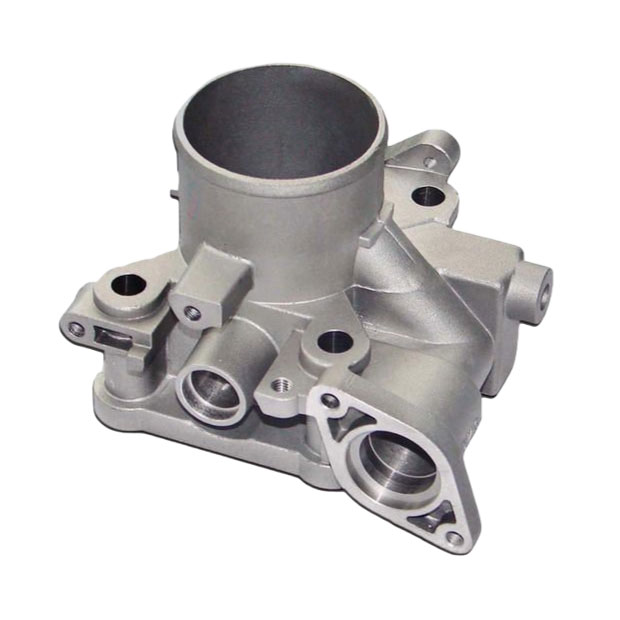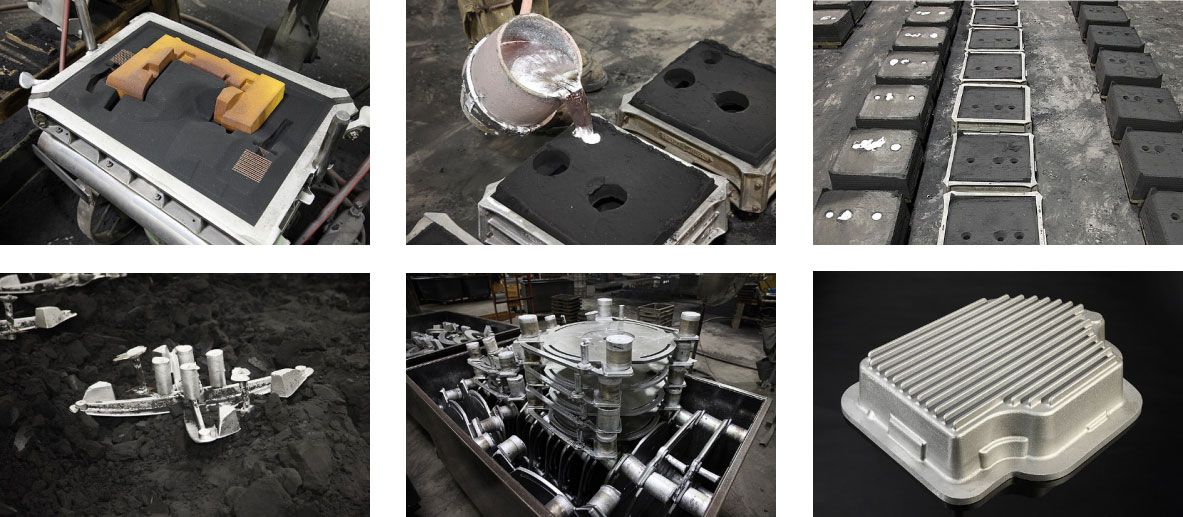
China Aluminum Sand Casting Manufacturers.
We normally continually supply you with essentially the most conscientious shopper support, along with the widest variety of designs and styles with finest materials. These attempts include the availability of customized designs with speed and dispatch for PriceList for China Factory Youlin® Aluminum Sand Casting Metal Die Casting Services, We sincerely welcome all guests to setup business enterprise interactions with us around the basis of mutual positive aspects. Remember to speak to us now. You'll get our qualified reply within just 8 several hours.
PriceList for China High Precision, Metal Stainless Steel Foundry, With nearly 10 years' experience in business, we have been confident in superior service, quality and delivery. We warmly welcome customers from all over the world to cooperate with our company for common development.
1.Our Aluminum Sand Casting Services
For over 10 years, Youlin has produced raw and fully machined Youlin® aluminum sand casting parts for tier 1 and OEM business in a wide range of industries. Businesses use our services because of our experience and expertise. Our key strengths include:
●We are highly experienced in supplying the US market with the dollar to RMB exchange rate making our prices highly competitive.
●We continually invest in our facilities, technologies and staff.
●Our focus on providing excellent customer service means that customers use us again and again.
●We can provide full project support from prototype development, pattern making right through to supplying fully machined castings.
2.Advantages of Aluminum Sand Castings
We have over 100 years of experience in the design and manufacturing of quality aluminum sand castings.
Sand Mold Casting is the most direct and low-cost means of converting metal into the desired shape. Aluminum castings are virtually unlimited in their ability to provide users with a wide range of advantages and applications.
Aluminum has a high strength-to-weight ratio that is approximately one third the weight of cast iron, steel, brass, and zinc.
With excellent corrosion resistance, reduced machining cycles, and the ability to anodize, buff, electroplate and powder coat, aluminum castings make it more cost-effective than a welded component, stamping or forging.
The light weight of aluminum, the improved strength that engineered alloys offer, and the increased ability of the sand casting process to produce stronger and thinner-walled parts allows us to produce a variety of castings for our customers ranging in size from 1 ounce up to 600 pounds for a wide range of Industries.
3.Materials for Aluminum Sand Castings
|
Almag 35 (Alloy 535) |
|
Tenzaloy 713 |
|
The aluminum alloy 535, better known as Almag 35 is a light weight high strength aluminum magnesium alloy that doesn't require heat treatment. Almag 35 offers excellent corrosion resistance, machines well and is also dimensionally stable making it great for products such as instruments or marine aluminum sand castings amongst other uses. |
As-cast physical properties of are equivalent to the heat treated 300 series aluminum alloys providing a cost savings because heat treatment is not necessary. Tenzaloy is a viable choice for frames, levers and brackets where impact strength or load bearing is required. |
|
|
Aluminum Alloy 319 |
|
Aluminum Alloy 355 |
|
Aluminum alloy 319 contains around 6% Si and 3.5% cu and is often used for general low cost uses because of its excellent casting and machining characteristics. The 319 sand cast aluminum alloy offers very good weldability, pressure tightness, and corrosion resistance making it a great aluminum alloy to use for engine components, oil pans, crankcases, gas and oil tanks etc. |
Aluminum sand casting alloy 355 uses copper to greatly improve its strength over the more common aluminum casting alloy A356. The 355 aluminum alloy is great for pressure tight applications and the alloy also maintains its strength at higher temperatures than A356 |
|
|
Aluminum Alloy 356 |
|
Aluminum Alloy A356 |
|
Aluminum alloy 356 has excellent casting characteristics and corrosion resistance along with good machinability and weldability. Common products manufactured from sand cast aluminum alloy 356 in our aluminum foundry include transmission cases, flywheel housings, oil pans, brackets along with various fittings and pump bodies. |
Sand cast aluminum alloy A356 has higher strength and ductility than 356 because the levels of impurities are lower in the A356 aluminum alloy. A356 aluminum castings cost a little more but are great for machine parts, chassis parts, along with other structural parts requiring high strength or pressure tightness. |
|
|
Aluminum Alloy 771 |
|
Aluminum Alloy 850 |
|
Aluminum sand casting alloy 771 offers high strength and shock resistance without the need for heat treatment. The 771 aluminum alloy offers good castability, machinability, and corrosion resistance. |
The 850 aluminum alloy is an aluminum-tin alloy often used for bearing applications. 850 alloys are often used in bearing applications where low friction and low cost along with compressive strength, fatigue strength and corrosion resistance is important. 850 alloy aluminum sand castings are often used for connecting rods, engine bearings, hydraulic pumps, and along with many other automotive and industrial applications. |
4.Aluminum Sand Casting Process
Youlin produces quality aluminum sand castings using the green sand process. A pattern is used to create an impression using a mixture of sand, water and organic compounds.

A sand mold is comprised of two parts; the cope (top) and the drag (bottom). Each mold is contained in an enclosure called a flask. The flask acts as an outer framework, allowing sand to be formed by compressing against the pattern and determines overall mold size. Before the flask is closed, cores may be placed inside the mold to create an internal casting configuration. Sprue holes are created into which molten aluminum is poured.
During the stage of the aluminum sand casting process when the aluminum has solidified, each casting is “unearthed” from the sand in the shakeout process. Molds may contain several casting impressions joined together by runners, gates and risers used to distribute and feed the molten aluminum. Once the shakeout process is complete, castings are transferred to finishing operations where the gates and risers are removed and parting lines are ground smooth. Castings may go through additional processes or secondary operations based on customer specifications before finally being shipped.
5.FAQ
Q: What is the best sand for sand casting?
A: Green sand, which is new or regenerated sand mixed with natural or synthetic binders, is the most commonly used material for making aluminum expendable molds. Green sand molds get their name from the fact that they are still moist when the molten metal is poured into them.
Q: What are the disadvantages of sand casting?
A:
a)Low Strength - Because sand casting is not a machined part, it has a high porosity. Because of this, sand casting is best used for smaller, non-weight bearing, prototypes.
b)Low Dimensional Accuracy - due to the nature of metals shrinking as they cool, the dimensional accuracy can fluctuate along the surfaces, with some parts of the cast being more accurate to form than others.
c)Poor Surface Finish - Sand casting is not the best casting process to use if you are looking to create a prototype with a machined look. The surface texture of the sand leaves its texture on the hardened metal.
d)Defects Happen - In sand casting, defects are simply unavoidable — it is as simple as that. Shrinkage, porosity, metal defects, and surface defects are all possible when sand casting.
e)Requires Finishing - Due to the poor surface finish, sand casting produces products that must be finished as a post-production project.
Q: Is cast aluminum stronger than aluminum?
A: For this process, aluminum gets poured into a mold and solidifies in place. Products made using the permanent mold casting technique are typically stronger and more durable than those crafted using die casting or sand casting.